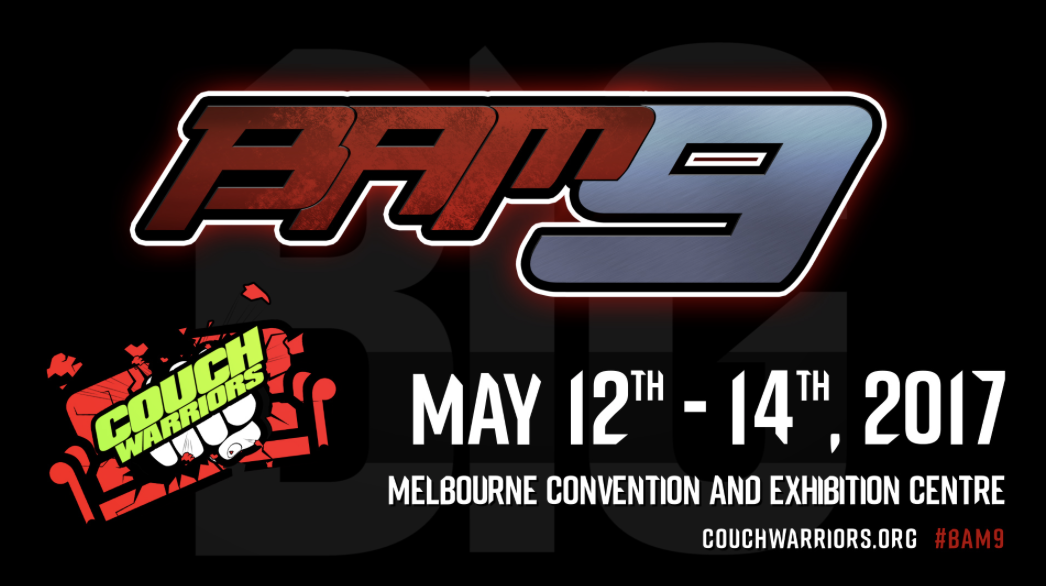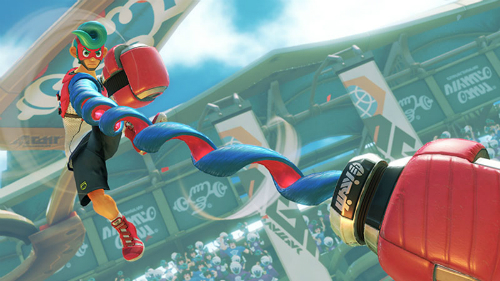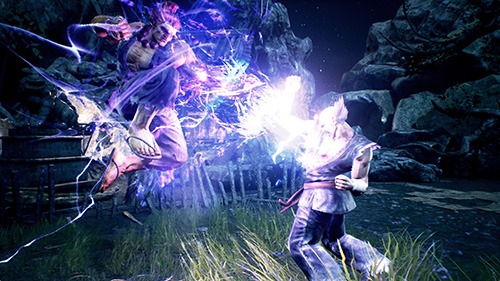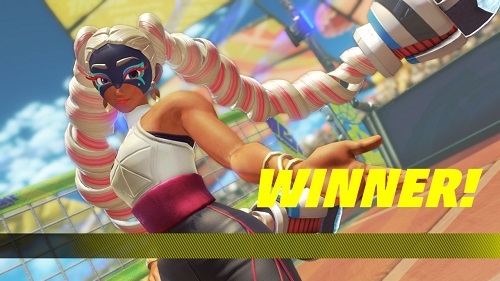
Fighting games and the highly social experiences they are have created some of my fondest gaming memories. Endlessly spinning around as Zangief in Street Fighter 2 as my friends lose it around me, pulling off a miraculous save as I’m falling to my death in Smash Bros and crushing my opponents in Tekken Bowl absolutely cemented the fighting game genre as one of my favourites. I’m not the person you’ll find contending the latter stages of Battle Arena Melbourne, but with a few friends over I’ll boot up my latest fancy and get my fight on. With ARMS, Nintendo are creating brand new fighter IP for the first time in years, and bringing their signature twist to the genre with the fighter’s extendable arms. ARMS couples a unique style with surprisingly deep fighting mechanics, but is hampered by a lack of meaningful exploration or expositions of its fighters.
At the most basic of levels, in ARMS you utilise a range of weaponised fists attached to extendable arms to beat the ever-loving snot out of your enemies in what can sometimes become a chaotic maelstrom of destruction. As a premise it’s certainly interesting and unique, and as you delve beneath the surface you quickly begin to realise just how these mechanics have been layered upon and exploited by Nintendo to give ARMS a massive mechanical depth. Punches can be curved, allowing you to punch moving targets and get around frontal defences, and each different type of ARM curves utilising a different mechanic. Boomerang style ARMS curve outwards before drastically coming towards the enemy in an arc, laser ARMS will drag the laser in a line as you curve your punch and standard ARMS will curve to a much lesser amount. Heavier ARMS will deflect a lighter ARM, allowing the heavier ARM to continue its trajectory towards you, and any singular ARM attack will break an attempted grapple and hit your enemy. Combine these with guards, charging attacks, jumps, dashes, elemental effects, supers and fighter’s unique abilities and ARMS becomes an intrinsically deep fighter despite a lack of traditional combo attacks. Fights are fun and interesting for a newcomer to the genre thanks to the unique hooks in the game, and the layering of mechanics and the constant combative and strategic decisions you need to make mean that those looking for a deeper fighter will be in for a great time as well.
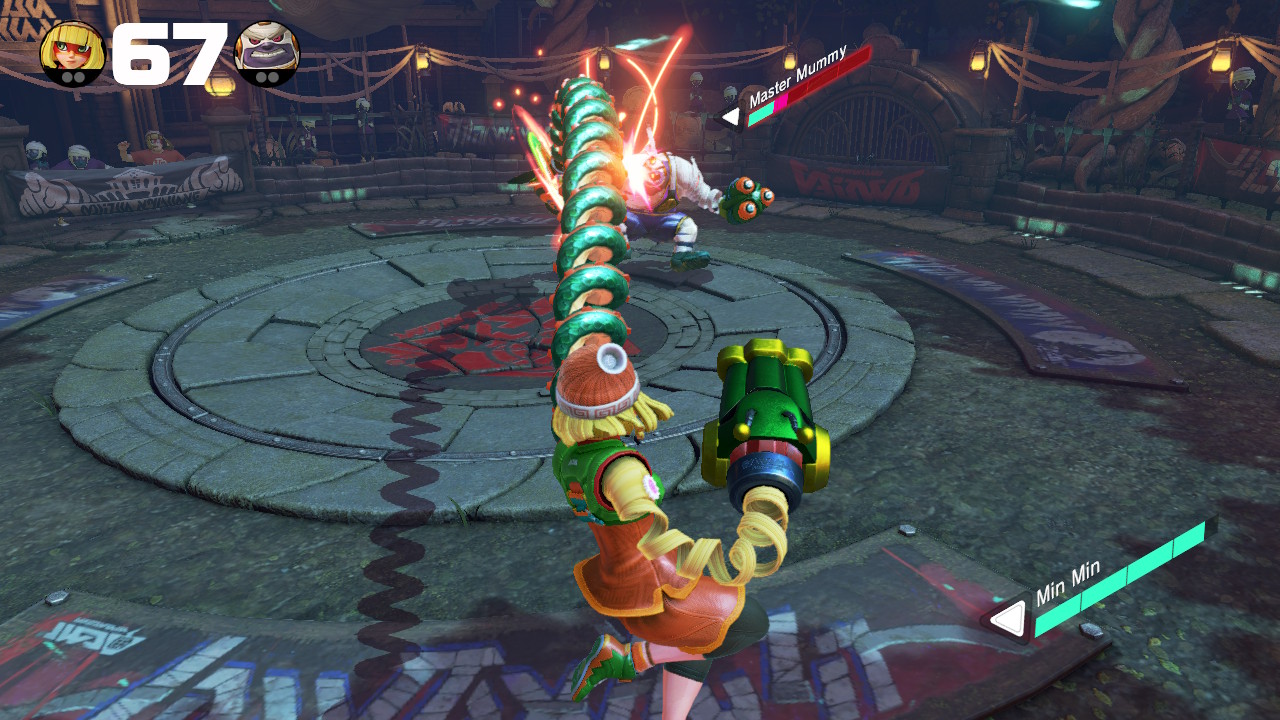
While all these different mechanics sound like they could be incredibly overwhelming in the beginning, this is perfectly avoided by how Nintendo have implemented their CPU level system into ARMS. From the Grand Prix mode to Hoops, you have a selection of 7 separate CPU levels you can choose from. The lowest level of CPU is a standard enemy that just moves around throwing punches without any strategy. As you increase the level, the game layers on mechanics to the way the CPU fights. At level 2 they begin to move more, utilising some jumps and dodges in an effort to avoid your attacks. Level 3 and 4 are where the game really kicks into gear, as enemies begin to actively utilise their special abilities, curving and elemental attacks and jumps and dodges to put you through your paces. This is perfectly displayed in 1-on-100 mode, a horde based survival mode where you must fight your way through 100 enemies. These enemies begin as the most basic level 1 CPU style enemies, gradually increasing in capability as you progress. By the end, you’re grasping every opportunity you can as the CPU begins to quickly land multiple hits and knock you back. This utilisation of CPU level allows for a method of increasing your skills that you can easily follow and keeps you from becoming overwhelmed by the game’s many mechanics. It has been a long time since I’ve played a new fighter that has actively made me feel like I was noticeably improving, as opposed to overwhelming me with 100+ different combos and moves to learn.
These mechanics are evident through the variety of different modes you can play in ARMS, both in single player and multiplayer variants. The best of these modes actually don’t focus on directly fighting your enemy and reducing their health, instead leveraging the game’s mechanics in unique contests of skill. V-Ball is easily my favourite mode, where you and an opponent (or two teams of two), punch and grapple a beach ball like you’re playing a game of volleyball. There’s also Hoops, where you need to grapple an enemy to throw them through a hoop like you’re playing basketball, complete with slam dunks. These two modes combine with Skillshot, where you and an opponent on opposing sides of the screen shoot down targets to get the highest score, to create a trifecta of incredibly engaging experiences that are incredibly fun and unique. If I was going to bust out any part of ARMS to show the game off to friends, these three would be it.
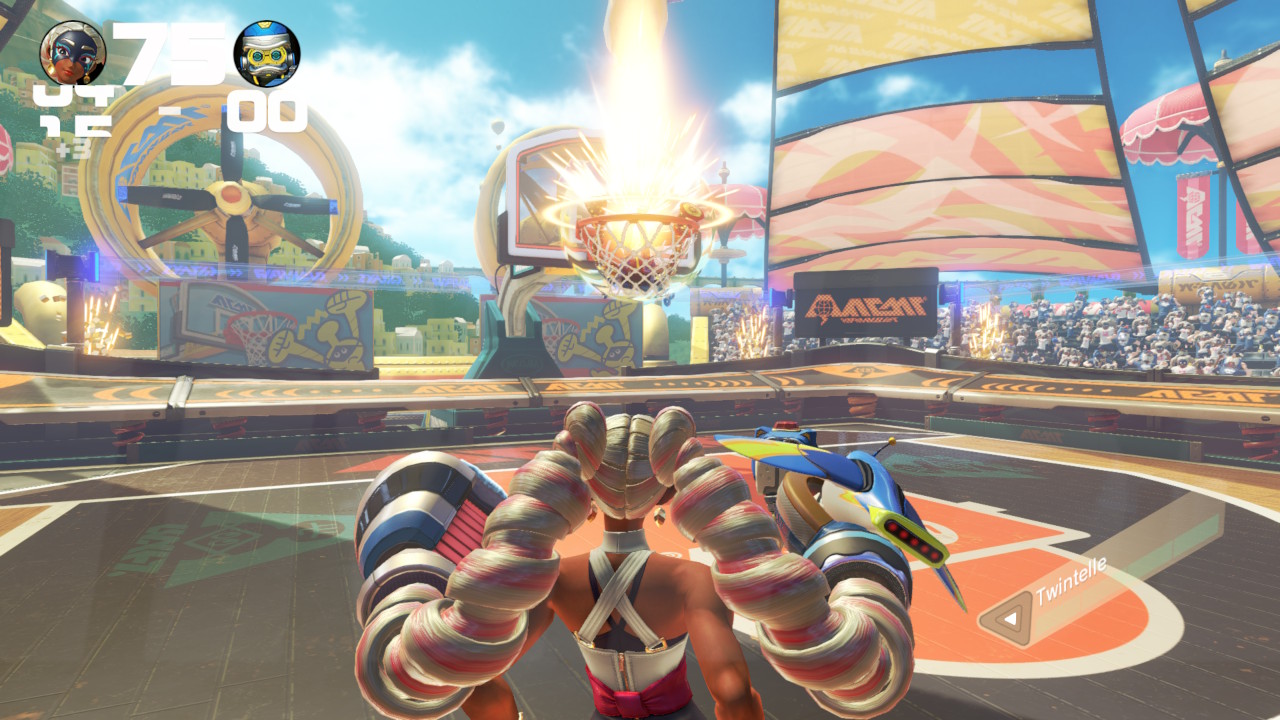
All of these modes are available to play online, both individually and as part of Party Mode – a lobby based system that groups you with other players and rotates you through the different modes in ARMS. Unfortunately, during my time with my review copy of ARMS I was unable to find any matches online to test this. I did, however, have a chance to try out the Global Testpunch, where things ran smoothly and effortlessly. Obviously this isn’t the optimal way to have trialled the online functionality of ARMS, but it is what it is. The one thing I found during party mode was how much I disliked the paired modes in ARMS compared to their solo offerings. 2-on-2 battles have you physically tethered to your teammate, which is incredibly counterintuitive when you don’t have the ability to communicate with them at all if they’re not physically standing next to you. 1-on-1-on-1 also regularly devolved into 2-on-1 with the 2 then duking it out between themselves. These modes would potentially work better when playing with friends, but if you’re playing alone online they’re not so great.
As you play through all of these modes you’ll unlock in-game currency which can be spent in the Get ARMS service to unlock new ARMS for your fighters. This feature has been touted by Nintendo during early marketing as a way to further customise your characters, but it’s surprisingly inaccessible due to relatively low currency earning rates. Playing through a full Grand Prix on level 3 difficulty, including some perfect rounds increasing my earnings and losses increasing the time taken, I was only able to gain enough currency for a ‘short timer’ session with the Get ARMS service. This basically means that a full Grand Prix gets you roughly 30 seconds of time, which will generally gain you 1-2 new ARMs. However, there is no guarantee that you will get an ARM for the character you’re using during Get ARMS, which can be pretty frustrating. Considering the myriad of ARMS available for each character, I would have liked to see unlocking them be slightly faster.
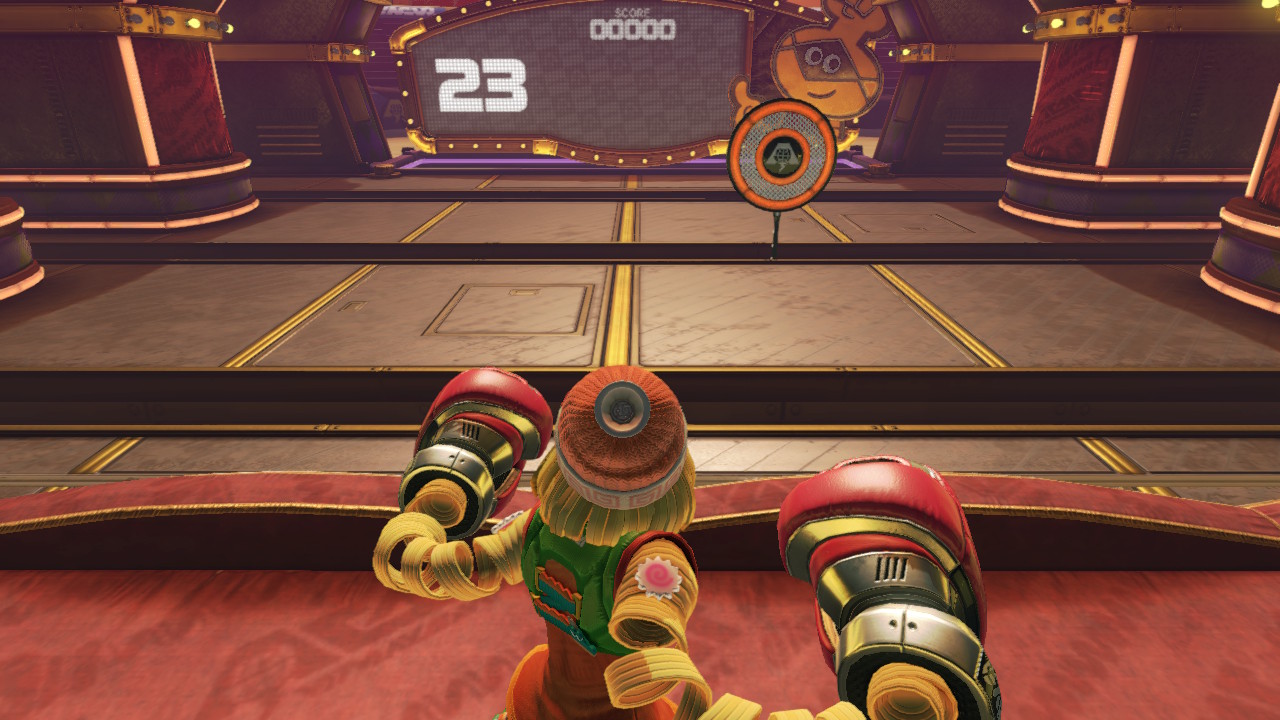
While most marketing for ARMS has shown the game only being played with motion controls, ARMS is also perfectly playable using standard controllers. Having played using the motion controls, pro controller and the Switch in handheld mode, however, I can say that motion controls are definitely the best way to play ARMS. Why is that I hear you asking? Because when playing using standard controls, the curvature of your punches is controlled by the same analogue stick you use to move your fighter. This means that it’s harder to maintain your directional movement, while also moving your character. Block is also mapped to pushing in the left analogue stick, which can be frustrating to trigger as an attack comes flying towards you. These integral mechanics are much easier to utilise with motion controls, making the game easier to play as a whole. Plus, to be perfectly honest, it feels great to actually make punching motions to launch your attacks.
The biggest offline mode of any fighter, however, is its campaign or arcade mode equivalent. In ARMS, this is Grand Prix, a collection of 10 matches from the various modes in the game that must be completed to be crowned the Champion of ARMS. Nintendo have made sure the mode isn’t too monotonous by including both standard fights and the more unique match types into the run, which is necessary due to the lack of story in the game. In a game with such an emphasis on unique and personality filled fighters, it’s dumbfounding that those same personalities aren’t expanded on at all. There is zero story or exposition during the Grand Prix, which led me to eventually begin skipping the small bits of flavour text before each match because I had realised just how meaningless it became after my fifth run through. This feels like a huge oversight and a missed opportunity to truly push ARMS as an ongoing premier IP for Nintendo.
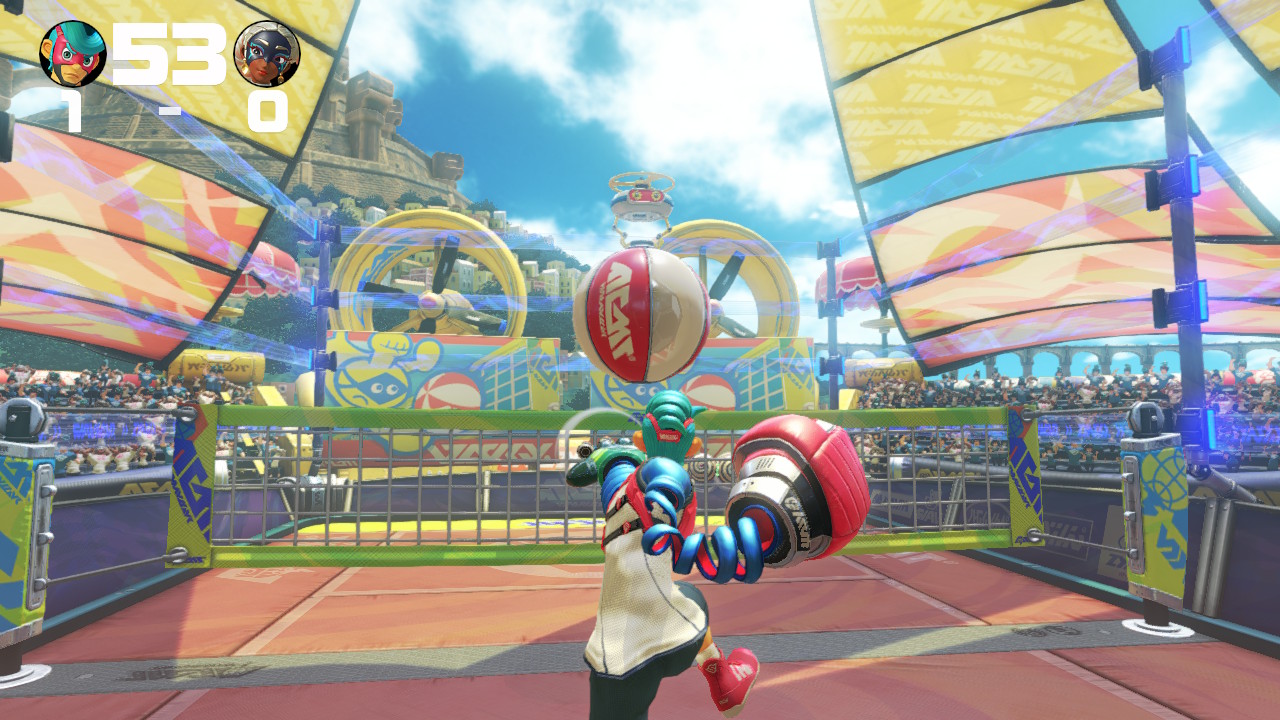
The lack of story is all the more frustrating because of just how interesting the fighters in ARMS are. You have Springman, with his perfectly coiffed hair and his never-say-die attitude which flows forth into a burst of hidden strength as his health gets low. Min-min uses her martial arts training to quickly move and kick away enemy attacks while in the air and can transform her left arm after grappling an enemy, keeping it permanently charged until you’re knocked down. Helix is a massive bundle of man-made goop shaped like a human who flows through the battlefield. Where do they come from, what are their stories, how did they get their magical extendable ARMS while others in the world have regular ARMS? We have no real idea and I’m legitimately frustrated to not be able to explore these characters and what could be an incredibly interesting world more fully.
The world itself is shown and expressed by the game’s unique art styles, interesting map designs and excellent soundtrack during your matches. ARMS may not be a technical powerhouse, but the art style is interesting, consistent and incredibly fun. This is supported by the unique and interesting map designs, with each centring around a certain fighter. Whether you’re ascending the steps towards a temple in Ninjara’s map or moving between tubes seemingly filled with clones in Helix’s map, everything is interesting and filled with detail. The music in ARMS is similarly fantastic, filled with upbeat tracks meant to get your blood pumping and your spirits up.
All in all, ARMS feels closer to a half-attempt at a massive new IP by Nintendo – boldened by the success of Splatoon, but still holding themselves back for fear of overinvesting. They’ve created a fighter that is unique, interesting and full of depth, but lacks the world building of similar games. ARMS is certainly a great game, but that lack of story content prevents it from being truly exceptional. If you’re looking for a new fighter and party game for your Switch, ARMS is easy to recommend, especially with the promise of free characters, maps and modes to come.
- Incredibly deep, yet easy to grasp mechanics
- Exceptional CPU level utilisation
- Interesting and fun modes of play
- Characters are full of personality
- Art style and music are consistently fantastic
- Some online modes are frustrating if played with randoms
- Lack of a story feels like a missed opportunity

